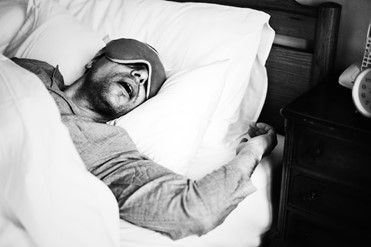A sleep disorder that can affect anyone, from infants to older adults. It disrupts your breathing while you sleep, leading to fragmented and unrestful sleep.
Types of Sleep Apnea
2 main types:
- Obstructive sleep apnea
- Central sleep apnea
Obstructive Sleep Apnea (OSA) occurs when the muscles in your throat relax excessively during sleep, causing your airway to become blocked intermittently. This obstruction triggers a reflex that partially awakens you to restore normal breathing.
Central Sleep Apnea (CSA) is less common and happens when your brain fails to send the proper signals to the muscles that control your breathing. CSA is often associated with certain medical conditions.
Who Does Sleep Apnea Affect?
OSA is more common in men, especially those under 50. However, after age 50, the risk is similar between men and women. Risk factors for OSA include excess weight, obesity, and being of certain ethnic backgrounds.
CSA is more common in older adults and people with specific health conditions, such as heart failure or opioid use.
Symptoms of Sleep Apnea
Sleep apnea can manifest in various ways, and not everyone experiences the same symptoms.
Common signs and symptoms include:
- Feeling extremely tired upon waking, even after a full night’s sleep
- Daytime sleepiness
- Snoring (not everyone with sleep apnea snores)
- Mood changes, such as depression and anxiety
- Memory problems, trouble concentrating, and cognitive issues
- Pauses in breathing during sleep
- Unusual breathing patterns
- Insomnia, night sweats, and restlessness at night
- Sexual dysfunction and waking up feeling breathless or choking
Diagnosis and Testing
To diagnose sleep apnea, your doctor may conduct an overnight sleep study, also known as a polysomnogram, at a sleep lab. Alternatively, home sleep apnea testing may be an option for some individuals. These tests monitor various parameters, such as heart rate, breathing, and brain activity.
Management and Treatment
Treatment for sleep apnea aims to reduce or prevent apnea events, improve sleep quality, and minimize associated health risks. Treatment options include:
Lifestyle modifications: These include weight loss, positional therapy, and managing underlying health conditions.
Positive airway pressure (PAP) devices: CPAP (Continuous Positive Airway Pressure) machines are commonly used to keep your airway open during sleep.
Oral appliances: These devices reposition the jaw and tongue to prevent airway blockage.
Nerve stimulators: Hypoglossal nerve stimulators can help control tongue movement and prevent airway obstruction.
Surgery: Surgical interventions may include removing excess tissue in the throat, the tonsils, or jaw repositioning.
Medications: Some medications may help manage central sleep apnea.
Prevention
While not all cases of sleep apnea can be prevented, maintaining a healthy lifestyle, managing your weight, practicing good sleep hygiene, and addressing underlying medical conditions can reduce your risk.
Living With Sleep Apnea
Managing sleep apnea requires commitment to treatment. Regular follow-up with your doctor, troubleshooting any issues with PAP devices, and making necessary lifestyle changes are essential steps.
If you suspect sleep apnea, seek professional evaluation and treatment to improve your sleep quality and overall health.
